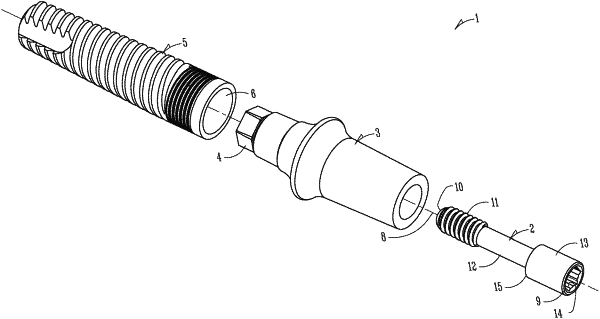| CPC A61C 8/0075 (2013.01) [A61C 8/006 (2013.01); A61C 8/0012 (2013.01); A61C 8/0013 (2013.01); A61C 8/0022 (2013.01); A61C 8/0025 (2013.01); A61C 8/0054 (2013.01); A61C 8/0066 (2013.01); A61C 8/0068 (2013.01); A61C 8/0069 (2013.01); A61C 8/0071 (2013.01); A61C 8/0074 (2013.01)] | 21 Claims |

|
1. A dental implant, comprising:
an implant body having a longitudinal axis, a coronal end, and an apical end, the coronal end of the implant body including an externally facing surface oriented transverse to the longitudinal axis and structured to engage an external shoulder portion of an abutment to form a seal therebetween;
an internal bore, provided within the implant body, having a coronal end adjacent to the coronal end of the implant body and an apical end, the internal bore including a first internally facing surface, extending from the coronal end of the internal bore towards the apical end of the internal bore, the first internally facing surface continuously tapers inwardly from the coronal end towards the apical end of the internal bore, wherein the first internally facing surface is configured to form an interference fit with an abutment, the internal bore further including an internally threaded portion positioned apical of an apical end of the first internally facing surface, and the internal bore forms a transition zone having a gradual change in geometry from the first internally facing surface to the internally threaded portion; and
an anti-rotation feature disposed within the internal bore, wherein the anti-rotation feature forms a second interference fit with the abutment.
|